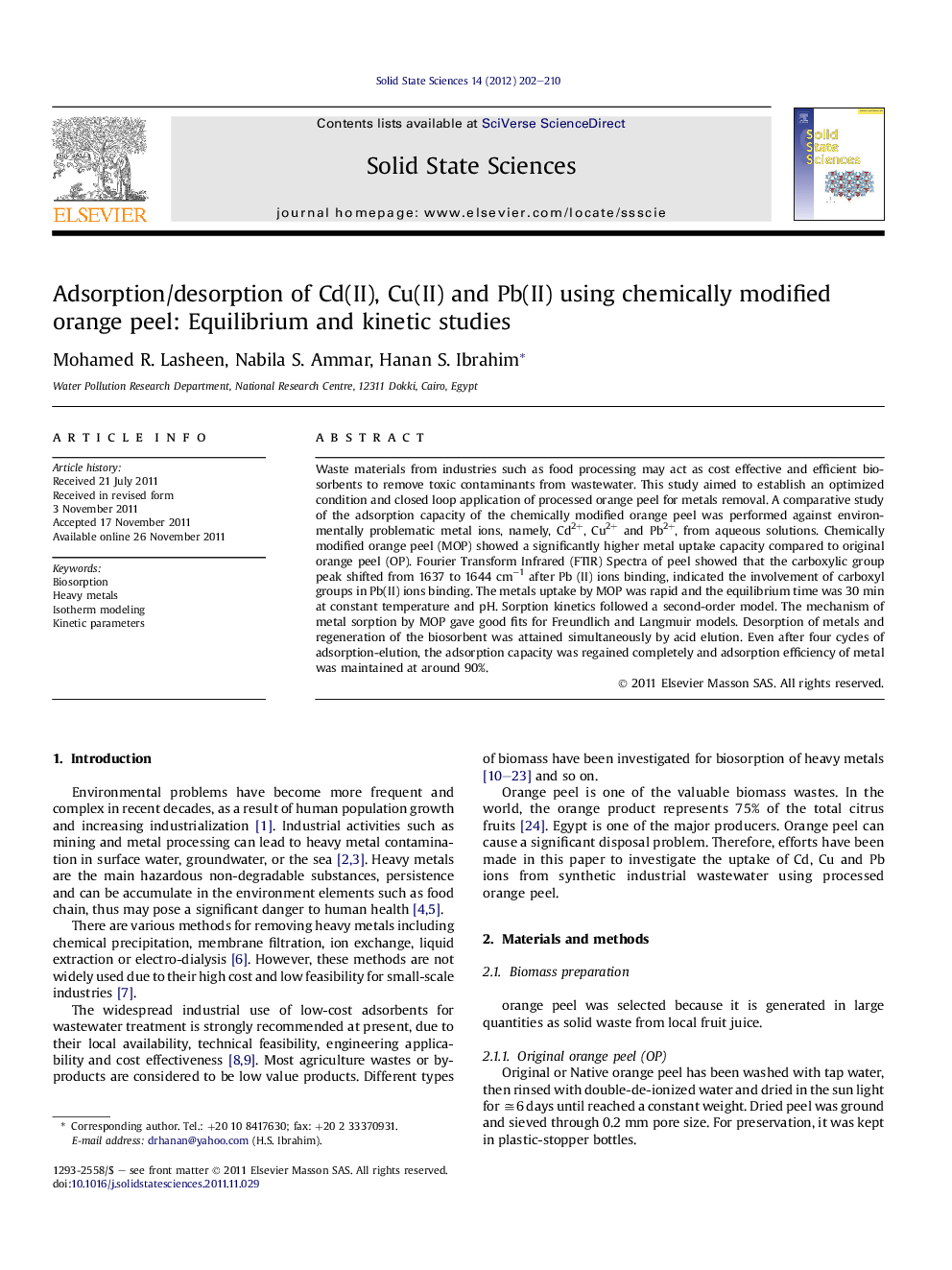| کد مقاله | کد نشریه | سال انتشار | مقاله انگلیسی | نسخه تمام متن |
|---|---|---|---|---|
| 1505391 | 993762 | 2012 | 9 صفحه PDF | دانلود رایگان |

Waste materials from industries such as food processing may act as cost effective and efficient biosorbents to remove toxic contaminants from wastewater. This study aimed to establish an optimized condition and closed loop application of processed orange peel for metals removal. A comparative study of the adsorption capacity of the chemically modified orange peel was performed against environmentally problematic metal ions, namely, Cd2+, Cu2+ and Pb2+, from aqueous solutions. Chemically modified orange peel (MOP) showed a significantly higher metal uptake capacity compared to original orange peel (OP). Fourier Transform Infrared (FTIR) Spectra of peel showed that the carboxylic group peak shifted from 1637 to 1644 cm−1 after Pb (II) ions binding, indicated the involvement of carboxyl groups in Pb(II) ions binding. The metals uptake by MOP was rapid and the equilibrium time was 30 min at constant temperature and pH. Sorption kinetics followed a second-order model. The mechanism of metal sorption by MOP gave good fits for Freundlich and Langmuir models. Desorption of metals and regeneration of the biosorbent was attained simultaneously by acid elution. Even after four cycles of adsorption-elution, the adsorption capacity was regained completely and adsorption efficiency of metal was maintained at around 90%.
The simple process of metals removal/recovery from wastewater by modified orange peel based on adsorption/desorption cycles proved the closed loop application.Figure optionsDownload as PowerPoint slideHighlights
► Simple pretreatment of orange peel as novel biomass show high-sorption performance of Cd(II), Cu(II) and Pb(II).
► the modified biosorption perfectly fitted the Langmuir and Freundlich adsorption isotherms models for the studied metal.
► The modified biosorption kinetics studies indicated that the experimental data followed the second-order kinetic reaction.
► The adsorption–desorption cycle was repeated four times using the same biomass of modified orange peel.
Journal: Solid State Sciences - Volume 14, Issue 2, February 2012, Pages 202–210